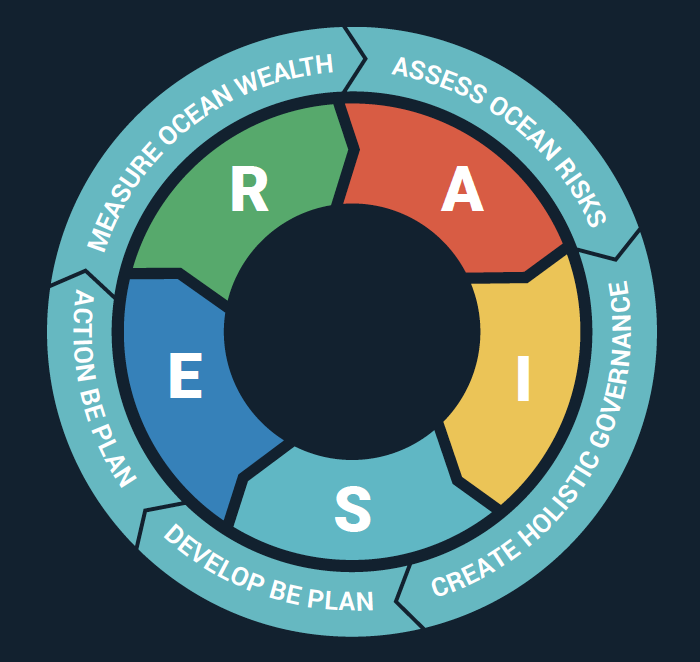‘The Blue Economy in Practice – Raising Lives and Livelihoods’ is a new report that shines a light on over 70 global case studies where governments and other agencies are successfully contributing to Blue Economy approaches.
Launched by Blue Economy consultancy NLA International, analysis of these wide-ranging examples of practice has also led to the identification of a new step-wise process for developing a Blue Economy. That process is grouped into five phases: from mapping and measuring ocean wealth through to the implementation and monitoring of Blue Economy Plans.
REV Ocean Science Director Alex Rogers co-authored the report and said: “The balance between sustainable ecosystems and sustainable prosperity is a challenge we’ve failed to meet but this report clearly reveals that it is possible to achieve both. The solutions to a sustainable Blue Economy outlined here show that triple-win solutions for people, the economy and the environment are achievable anywhere in the ocean.”
In celebration of World Oceans Day 2021, the report also identifies five core principles to “RAISE” the quality of human and marine life and livelihoods that should be considered throughout a Blue Economy journey, so that policies and practices are Regenerative, Adaptive, Inclusive, Sustainable and Evidence-led.
Practice examples featured in the report include:
- How natural capital and ocean accounts are changing perspectives in the UK, Australia and Morocco.
- How the potential impacts of climate change are being modelled to inform transport decisions in the Caribbean.
- How new ocean data portals are maximising the value that everyone can extract from marine and maritime information.
- How Canada is engaging with diverse communities to develop its Blue Economy strategy.
- How Vietnam’s National Action Plan for management of marine plastic makes a public commitment to specific measurable targets.
- How India and Norway are collaborating on Marine Spatial Planning, the cornerstone of Blue Economy development.
- How the Port of Los Angeles is contributing to California’s Blue Economy by aiming to become a zero-emissions port.
- How schools, universities and industry bodies are launching new Blue Economy-themed education and training offers.
- How the Dutch Central Bank is including biodiversity in its core risk modelling framework.
- How local communities in Chile and the Philippines are central to Monitoring, Control and Surveillance of marine protected areas.
- How a range of actors, from governments to venture capitalists, are investing in Blue Economy innovation.
NLAI Director and report co-author Andy Hamflett said: “We are witnessing burgeoning interest in the Blue Economy globally, but coverage of developments can be quite high-level, which makes it hard for many to engage in meaningful ways. By presenting tangible examples of practice within an easily accessible headline structure, we hope to make it easier for governments, policy-makers and all stakeholders to find the successful approaches they need most.”
NLAI Associate and report co-author Belinda Bramley said: “We’re pleased to be shining the spotlight on so many examples of good practice, but equally important are the principles that determine how good policies are designed and delivered. Our analysis suggests that the best Blue Economies will be built on approaches that are regenerative of the ocean environment; adaptive to a changing climate and new knowledge; inclusive of all stakeholders, particularly those who depend most on ocean resources; sustainable environmentally, socially and economically; and evidence-led. Blue Economies that follow these principles are most likely to RAISE the quality of lives and livelihoods.”
Download ‘The Blue Economy in Practice – Raising Lives and Livelihoods’ now. The report is part of NLAI’s Blue Economy Pulse project, which aims to track, synthesise and raise awareness of new initiatives related to the Blue Economy globally. You can sign up to follow Pulse on its dedicated LinkedIn page.
